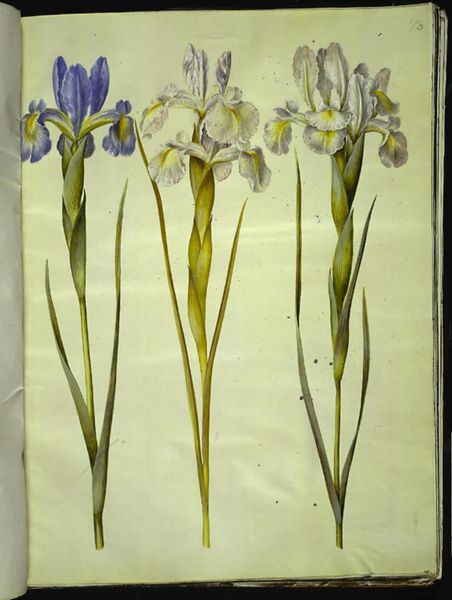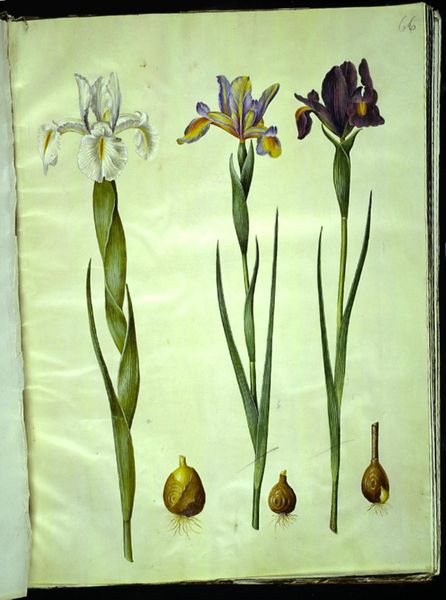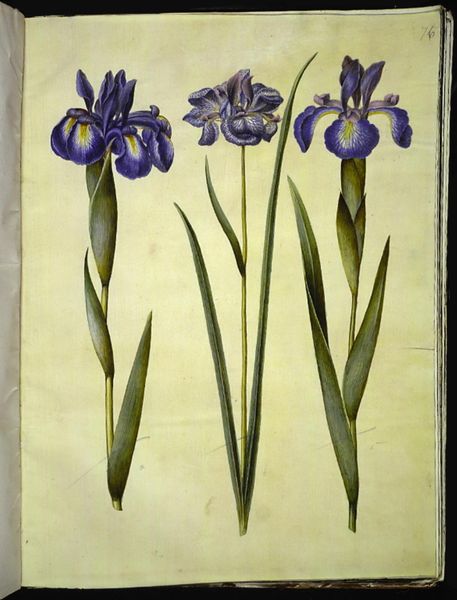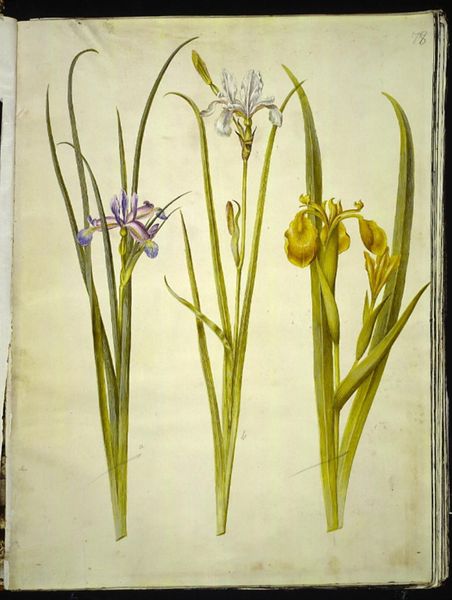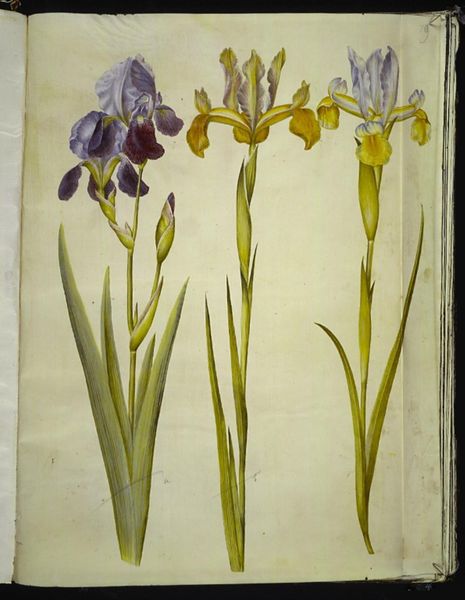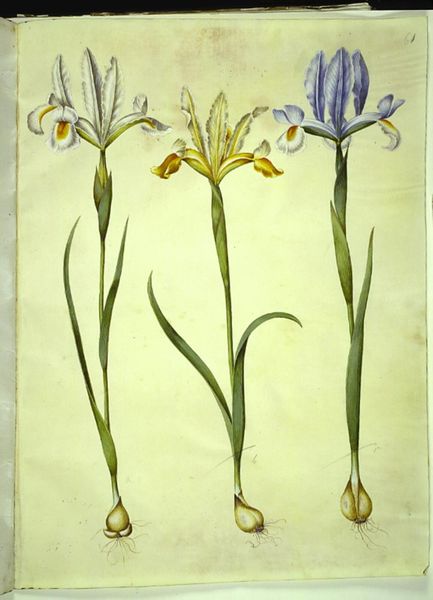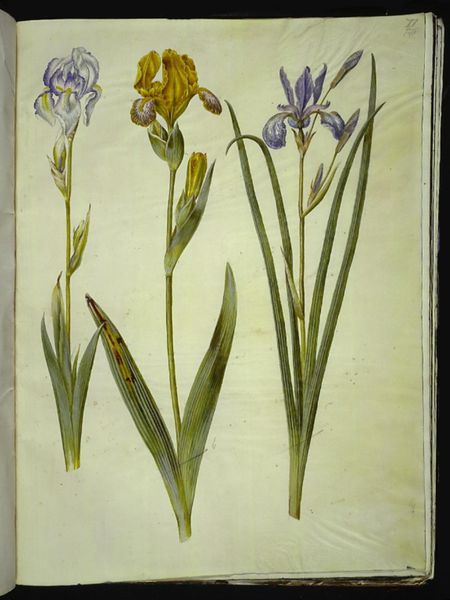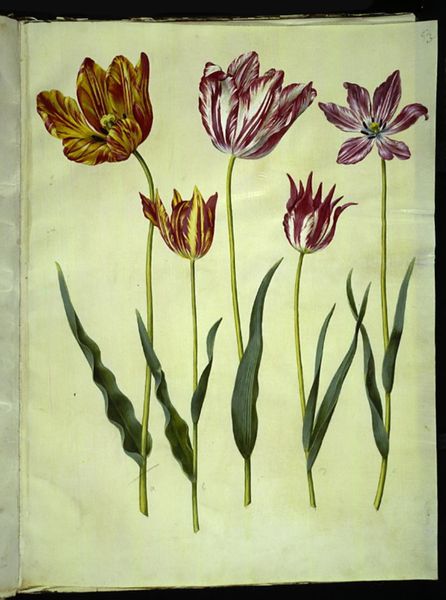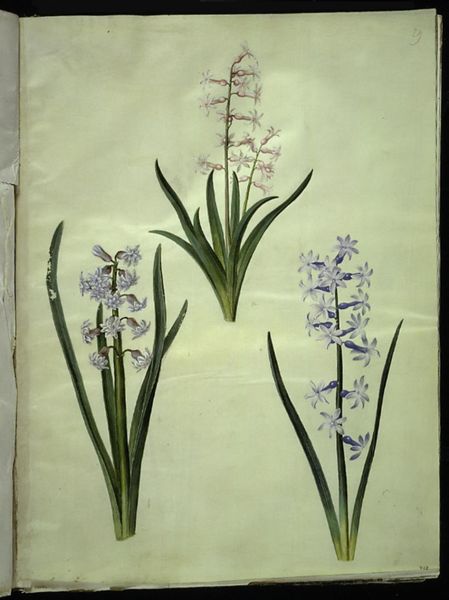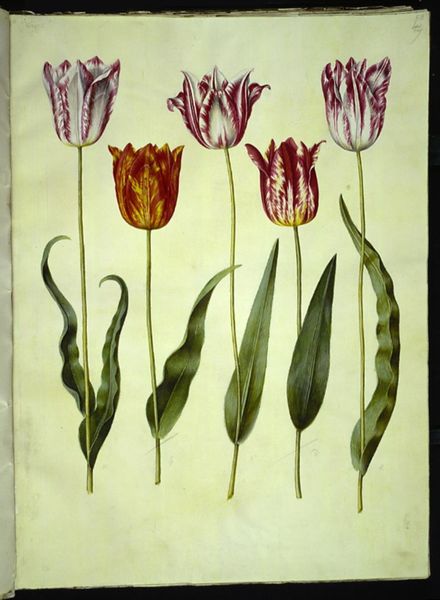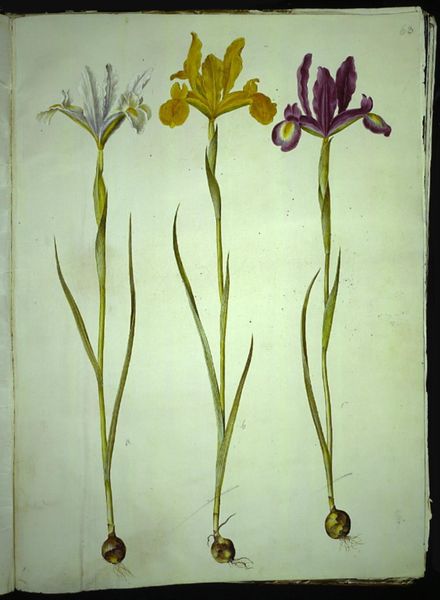
Iris ×germanica (have-iris); Iris xiphium (spansk iris) 1649 - 1659
0:00
0:00
drawing, gouache, watercolor
#
drawing
#
gouache
#
watercolor
#
watercolour illustration
#
watercolor
#
realism
Dimensions: 505 mm (height) x 385 mm (width) (bladmaal)
Editor: We’re looking at "Iris xgermanica" and "Iris xiphium," a watercolor, gouache, and drawing attributed to Hans Simon Holtzbecker, dating between 1649 and 1659. It feels very precise, almost like a scientific illustration. What do you see in this work, particularly considering its historical context? Curator: What strikes me is the intersection of art, science, and patronage in the 17th century. These botanical studies, commissioned for wealthy patrons, weren't purely aesthetic. They reflected a burgeoning interest in the natural world, fueled by exploration and trade. Holtzbecker was documenting these plants but also participating in a network where knowledge, status, and beauty were intertwined. How does the inclusion of both flower and bulb affect the way you consider its social and cultural role? Editor: It makes me think about the power dynamics involved. Someone, somewhere, had access to these specimens, likely gathered from different parts of the world, and then commissioned an artist to create this record. It wasn’t just about capturing beauty; it was about possessing and controlling knowledge. Curator: Exactly. And the location in a museum changes the function again; It goes from being an item owned by private interests into being placed for viewing by the public, even if inequitably accessible. Does this realism present a transparent record or are other choices visible? Editor: Well, the arrangement seems deliberate. Two different irises displayed side by side at the artist's direction; this may point to it being posed rather than discovered. I had initially thought scientific illustration meant that it was "objective." Curator: Museums inherently shape our understanding of art. What have you learned about their role in shaping history and knowledge through looking at this piece? Editor: It’s made me consider how art can be both a product and a reflection of power, and the responsibility that museums have in acknowledging these complex histories.
Comments
No comments
Be the first to comment and join the conversation on the ultimate creative platform.

